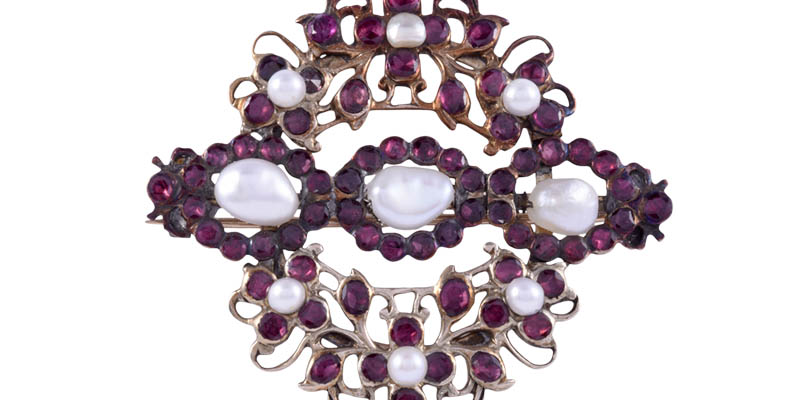The Victorian Era is named for Queen Victoria (1819-1901) who ruled from 1837 until her death. She was a beloved monarch who was a huge influencer on all styles of the day.
Victorian is a time period that many are familiar with, or have at least heard of. There are three periods within the Victorian style. Let’s explore them.
The early Romantic period from the 1830’s to 1860’s was full of natural motifs in silver and gold. During this time clear stones were only worn during the day and colored stones by night. The Victorian jewelry styles of the period reflected the gestures of love between the young Queen Victoria and her husband, Prince Albert. His engagement gift to her was a ring in the form of a snake holding its tail in its mouth, which symbolized eternity.
Both the snake motif and the tradition of presenting an engagement ring arose from Prince Albert’s gift. The ring was set with rubies, diamonds, and an emerald, the queen’s birthstone. This sparked imitations in broader society.
Victorian Romantic period jewelry used colored gold and often had semi-precious stones like turquoise or garnet. Rings and brooches were popular, and cameo brooches staged a comeback in larger and more elaborate versions than those from the Napoleonic era. The industrial and technological advances of the Victorian age created a wealthier middle class, which demanded quality, mass-market jewelry.
Prince Albert died in 1861. From that time forward until her death, Queen Victoria dressed in mourning, wearing black from head to toe. Her intense mourning style spurred the popularity of Victorian-era mourning jewelry, launching the Grand period.
This is the part of the Victorian phase is the one that most attribute to Victorian style. It was characterized by a lot of black onyx, jet, and garnet in heavy styles. Mourning jewelry also frequently included locks of hair from the dear departed, either inserted invisibly within a locket, woven into a bracelet or ring, or included within a broach in a knot design. Along with dark gemstones or natural materials like jet, mourning jewelry used dark metals as settings.
Victorian jewelry moved on from the Grand period in the 1890’s, and Victorian Aesthetic jewelry became the dominant style. The aesthetic phase included more feminine motifs and floral designs. These pieces highlighted zircon, sapphires, rubies, and of course diamonds.
As the public grew weary of Queen Victoria’s prolonged mourning, fashions simultaneously evolved to be less voluminous and more revealing. Hairstyles also became looser and higher, revealing ears to adorn with earrings. Aesthetic jewelry was smaller and simpler. During the period, trade opened up with Japan, and Japanese motifs in jewelry became fashionable as well.
The simplification of design and its emergence from mourning styles predicted the advent of the Art Nouveau movement, which emphasized flowing lines and nature-related motifs.
Pieces from all points in the history of Victorian style jewelry retain their value and historical interest. Solvang Antiques acquires and makes available quality Victorian pieces that are both beautiful and characteristic of the three phases of the Victorian age.

